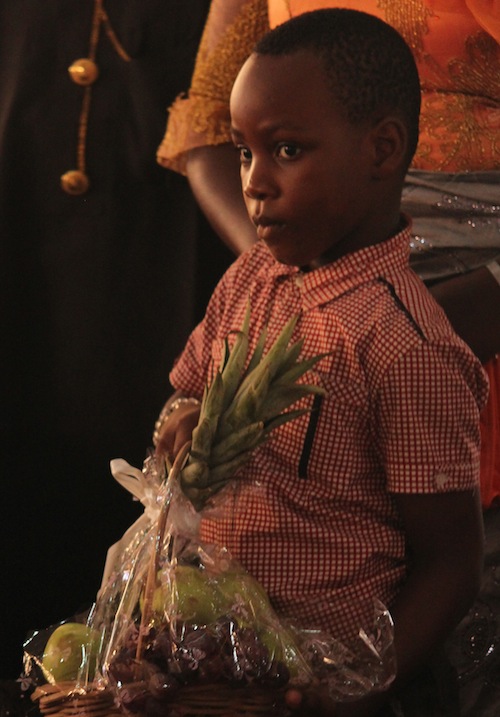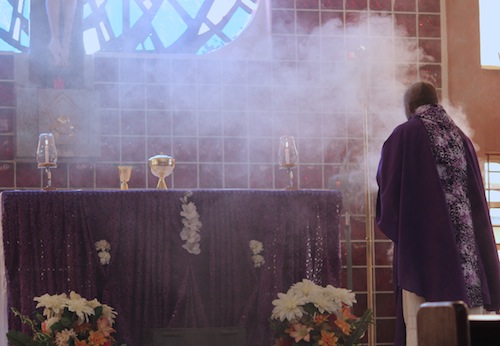Joy, Tradition, African Culture in Liturgy
I wanted to share with all of you our Sunday mass experience in Lagos, Nigeria. We began the day at Sacred Heart Parish on the outskirts of the city in a place called Ojota. This parish is the setting for the first talks in EWTN’s series “Word for a Wounded World.”
The parish is the home to 7,000 African families. Every mass is packed to capacity, and the church grounds are a constant buzz of activity. I understand from the people that this is the norm here in Nigeria. The Mass is vibrant and alive, not a once a week event of clocking in and out, which seems to be how many people in the Western world their view Sunday mass obligation.
In Nigeria, one mass ends and another begins with people streaming in and out. Horns honking, women dressed in their brightly colored Sunday finest, each trying to outdo the other in beauty and style. The way the people dress is a sharp contrast to the casual American culture. Here the people have a lot less in the way of material goods, but regardless they give their best to God. I was also surprised to find that here in Nigeria it is still the cultural norm for ladies to cover their heads in some way. Most of the ladies coordinate their head wraps to match their dresses, in a tasteful ladylike fashion.
Mass itself was a beautiful blend of a Novus Ordo English mass and traditional African elements. Each age group contributes in some way during the mass. The children form a group with elements of traditional dance done tastefully and appropriately for their culture. They process into the church in front of the priests and altar boys with incense and candles. The choir is vibrant complete with traditional drums and the organ. The congregation sings and sways along to all of the music. The joke about Catholics not knowing how to sing would be met with blank stares here. At this parish everyone sings, whether on key or not.
Offertory is fascinating. Instead of having ushers pass the baskets throughout the congregation, they place the baskets in the center aisles. The people process in a circle and drop their offerings in the basket. Giving something is a part of every offertory here, not just on Sunday as is the norm in the United States.

Communion rails are also still used in this part of the world. This might seem odd coming from a mass that uses bongo drums, but everything was very lovely and very appropriately done. At communion time people approached very reverently, kneeling around the edge of the altar and receiving the Eucharist on the tongue.
The African people seem to have embraced the intended elements of Vatican II — praying the mass in the language of the people while retaining the elements of sacred that were lost in many areas of the world due to misinterpretation.
The final blessing took about twenty minutes. Then people processed out of the church and back in again with their gifts. Donations to the parish in every form. Fruit, grain, even a live goat was presented! They brought them to the many priest concelebrating mass, and were blessed with a generous sprinkling of holy water.
They share their joy, the very elements that sustain life here, with their church community. Joy, so much joy — it is a key element in African worship. It draws you to question your own attitude when going to mass. Do I go to mass with joy? If not, why?















